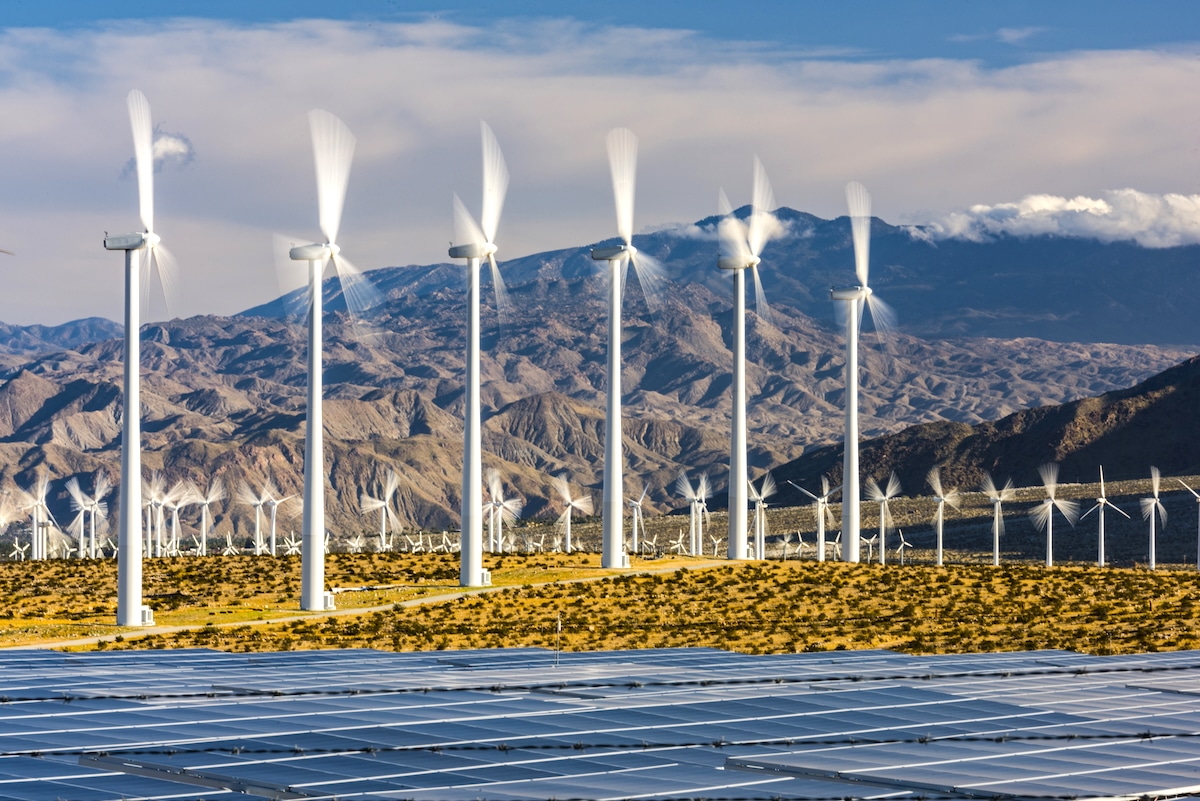A wind farm with solar panels in Palm Springs, California. n4kodiak / E+ / Getty Images
Founded in 2005 as an Ohio-based environmental newspaper, EcoWatch is a digital platform dedicated to publishing quality, science-based content on environmental issues, causes, and solutions.
With solar leading the way, renewables are on track to generate nearly 50 percent of global electricity this decade. But green energy is still predicted to fall short of the United Nations target of tripling capacity, according to Renewables 2024: Analysis and forecast to 2030, a report from the International Energy Agency (IEA).
More than 5,500 gigawatts (GW) of global renewable capacity is set to be added between now and 2030, which is nearly three times the growth from 2017 to 2023, the report said.
“Renewables are moving faster than national governments can set targets for,” said Fatih Birol, IEA’s executive director, as Reuters reported. “This is mainly driven not just by efforts to lower emissions or boost energy security: it’s increasingly because renewables today offer the cheapest option to add new power plants in almost all countries around the world.”
Based on today’s governmental policy settings and current market trends, of the world’s renewable capacity installed between 2024 and 2030, almost 60 percent will come from China, a press release from IEA said.
That would mean nearly half the total global renewable power capacity would be in China by 2030, up from a third in 2010.
“Due to supportive policies and favourable economics, the world’s renewable power capacity is expected to surge over the rest of this decade, with global additions on course to roughly equal the current power capacity of China, the European Union, India and the United States combined,” the press release said.
This decade, solar PV is projected to account for 80 percent of worldwide renewable capacity growth. This is due to the construction of large solar plants and an increase in installations of rooftop solar by households and companies.
The expansion of wind is forecast to double between now and the end of the decade, compared with the period 2017 to 2023.
In nearly every country in the world, solar PV and wind are the least expensive options for adding new electricity generation.
Because of these trends, almost 70 countries that together make up 80 percent of renewable capacity around the world are set to meet or exceed their current renewable goals for 2030.
“The growth is not fully in line with the goal set by nearly 200 governments at the COP28 climate change conference in December 2023 to triple the world’s renewable capacity this decade – the report forecasts global capacity will reach 2.7 times its 2022 level by 2030,” the press release said. “But IEA analysis indicates that fully meeting the tripling target is entirely possible if governments take near-term opportunities for action.”
In order to meet that goal, bold plans would need to be outlined for the next Nationally Determined Contributions set under the Paris Agreement, which are due in 2025. It would also require international cooperation to bring down the high costs of financing for developing and emerging economies, which are leading to restrained growth of renewables in regions with high potential like Southeast Asia and Africa.
To be able to meet international climate goals, the rollout of renewables would need to be sped up, and the adoption of sustainable hydrogen, biofuels, biogases and e-fuels accelerated as well.
The manufacturing capacity of solar PV is predicted to triple in the United States and India by 2030, which will help global diversification. Solar panels produced in the U.S. cost three times more than those made in China, and twice as much as solar panels made in India.
The report said policymakers should consider ways to balance the additional benefits and costs of local manufacturing, while taking into account priorities like energy security and job creation.
“This report shows that the growth of renewables, especially solar, will transform electricity systems across the globe this decade. Between now and 2030, the world is on course to add more than 5 500 gigawatts of renewable power capacity,” Birol said in the press release. “By 2030, we expect renewables to be meeting half of global electricity demand.”
Subscribe to get exclusive updates in our daily newsletter!
By signing up, you agree to the Terms of Use and Privacy Policy & to receive electronic communications from EcoWatch Media Group, which may include marketing promotions, advertisements and sponsored content.
